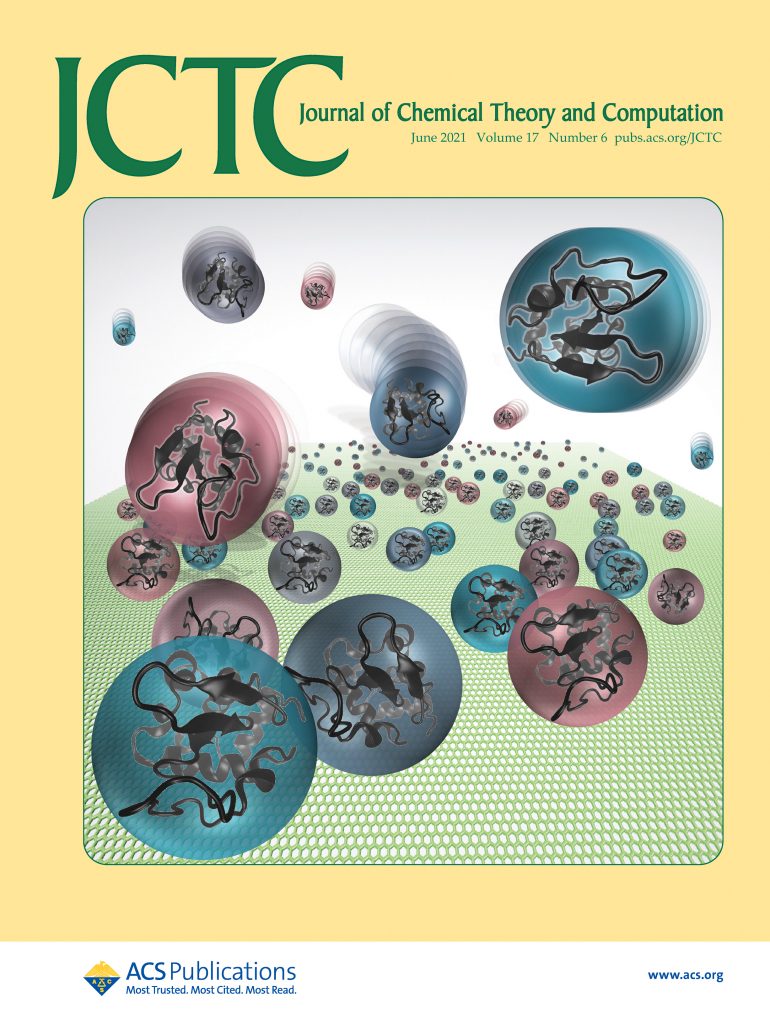On the front cover: Brownian Dynamics Simulations of Proteins in the Presence of Surfaces

Brownian dynamics simulations are well-suited to study processes governed by diffusion, such as the adsorption of protein molecules to a mica surface. Researchers from the Molecular and Cellular Modeling (MCM) group at HITS, which is led by Rebecca Wade, have developed a way to model hydrodynamic and electrostatic interactions in Brownian dynamics simulations of the diffusion of protein molecules in the presence of a surface. The paper “Brownian Dynamics Simulations of Proteins in the Presence of Surfaces: Long-Range Electrostatics and Mean-Field Hydrodynamics”, as well as the front cover illustration, have now been published in the Journal of Chemical Theory and Computation.
Simulations of macromolecular diffusion and adsorption in confined environments can offer valuable mechanistic insights into numerous biophysical processes. In order to model solutes at atomic detail on relevant time scales, Brownian dynamics simulations can be carried out with the approximation of rigid body solutes moving through a continuum solvent. This allows the precomputation of interaction potential grids for the solutes, thereby enabling the computationally efficient calculation of forces. However, hydrodynamic and long-range electrostatic interactions cannot be fully treated with grid-based approaches alone. Therefore, the researchers have now developed a treatment of both hydrodynamic and electrostatic interactions that includes the presence of surfaces by modeling grid-based and long-range interactions. The scientists applied this approach to simulate the self-association and many-molecule adsorption of the well-characterized protein hen egg-white lysozyme to mica-like and silica-like surfaces. Using this new approach, they found that the computational model can recover a number of experimental observables of the adsorption process and provide insights into their determinants. The computational model has been implemented in the Simulation of Diffusional Association (SDA) software package.
Publication:
Brownian Dynamics Simulations of Proteins in the Presence of Surfaces: Long-Range Electrostatics and Mean-Field Hydrodynamics
Martin Reinhardt, Neil J. Bruce, Daria B. Kokh, and Rebecca C. Wade
Journal of Chemical Theory and Computation 2021 17 (6), 3510-3524
DOI: 10.1021/acs.jctc.0c01312
About HITS
HITS, the Heidelberg Institute for Theoretical Studies, was established in 2010 by physicist and SAP co-founder Klaus Tschira (1940-2015) and the Klaus Tschira Foundation as a private, non-profit research institute. HITS conducts basic research in the natural, mathematical, and computer sciences. Major research directions include complex simulations across scales, making sense of data, and enabling science via computational research. Application areas range from molecular biology to astrophysics. An essential characteristic of the Institute is interdisciplinarity, implemented in numerous cross-group and cross-disciplinary projects. The base funding of HITS is provided by the Klaus Tschira Foundation.